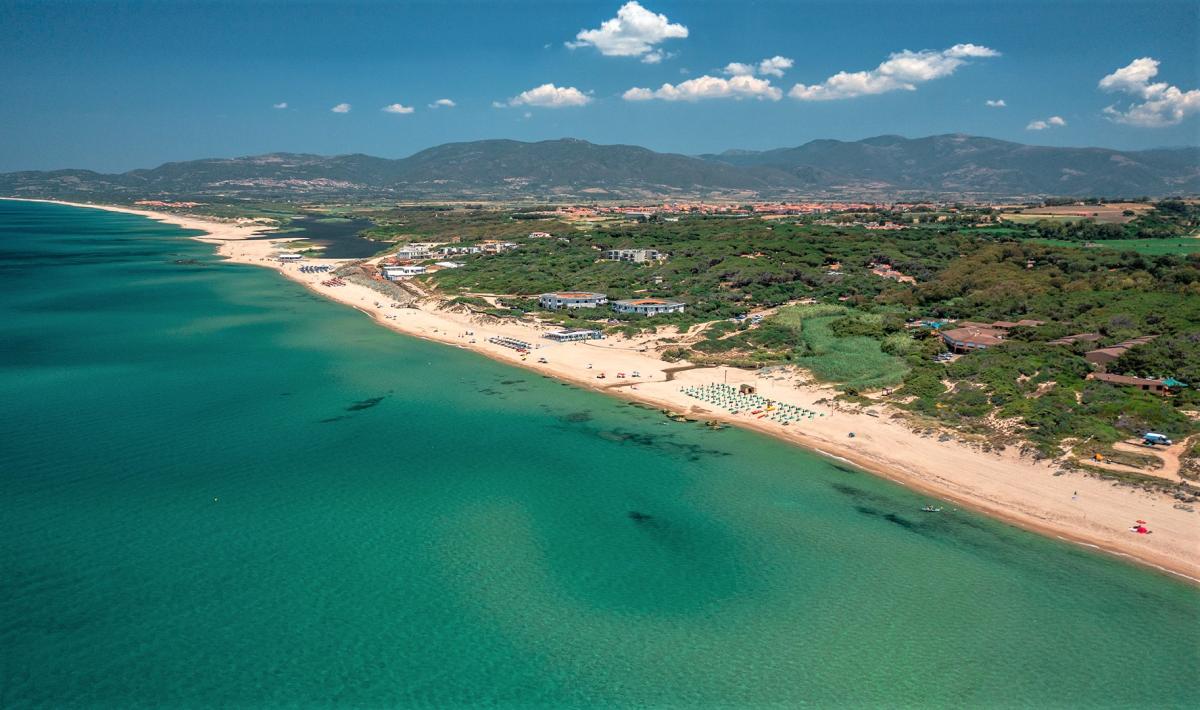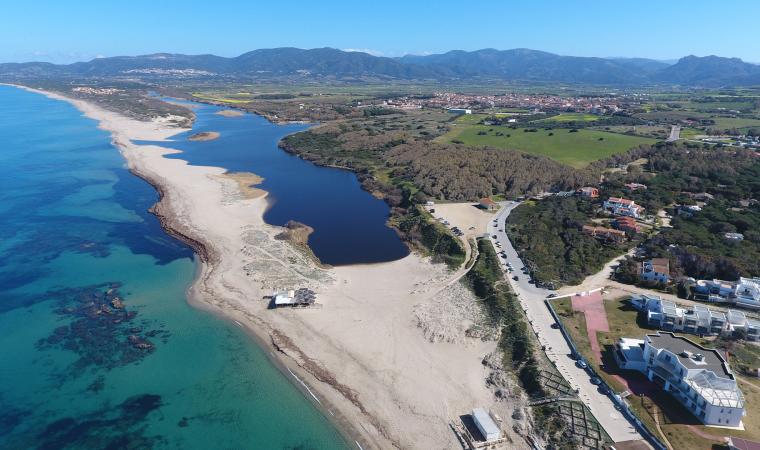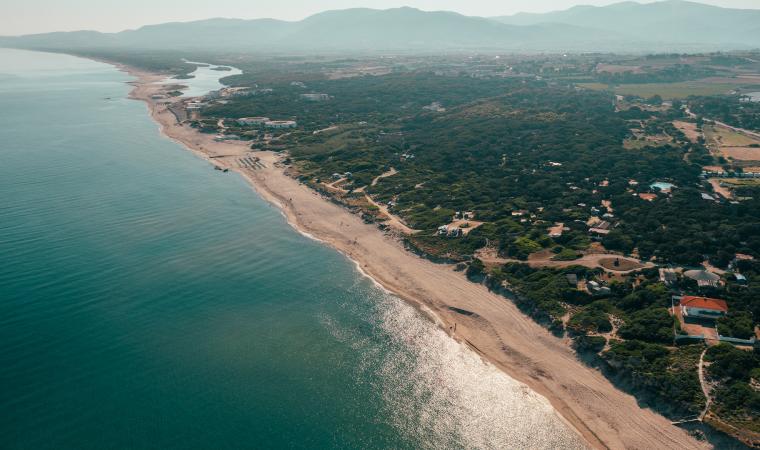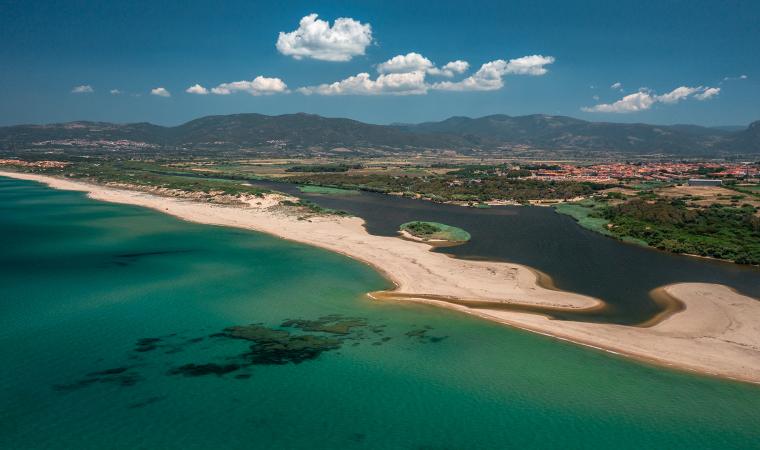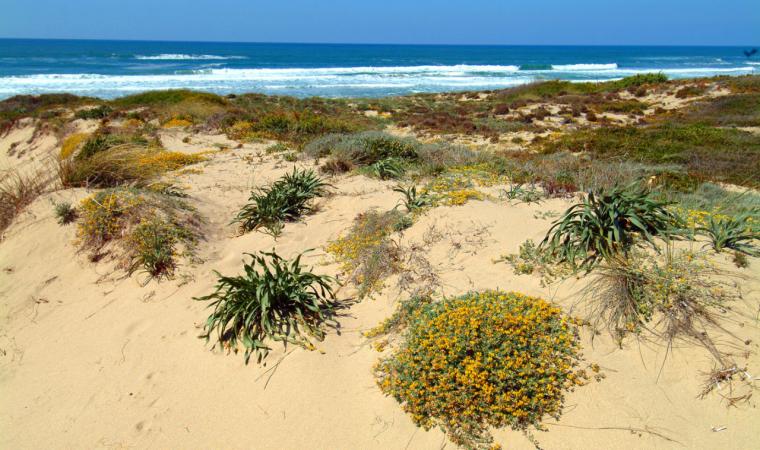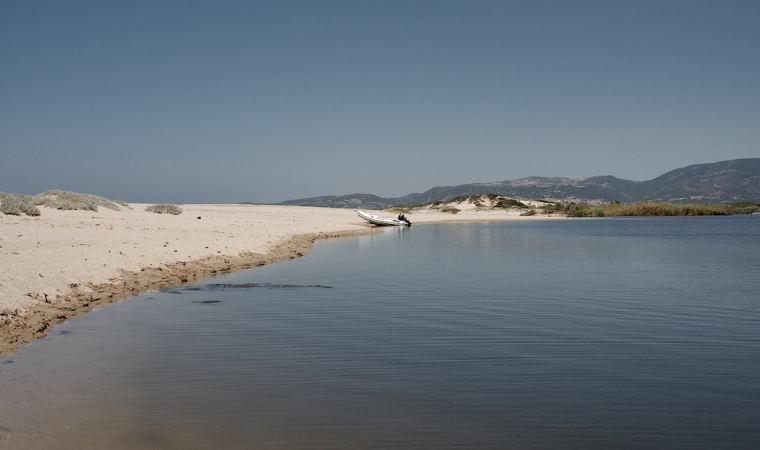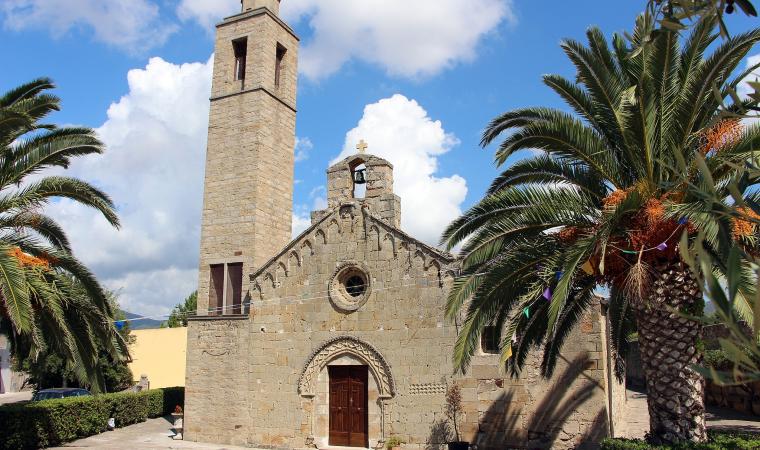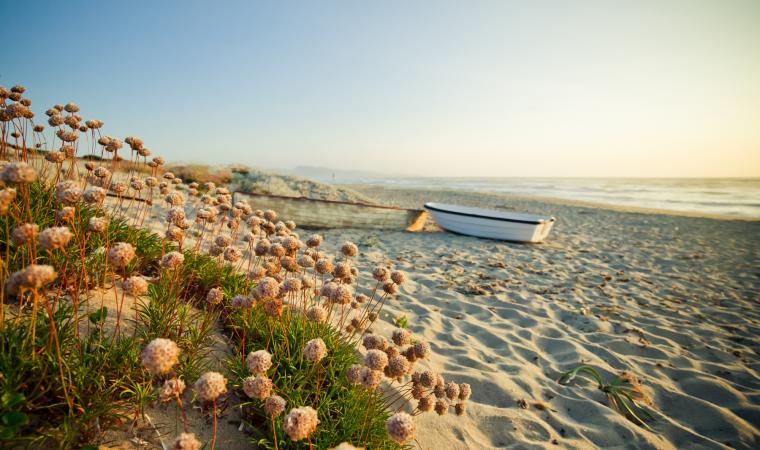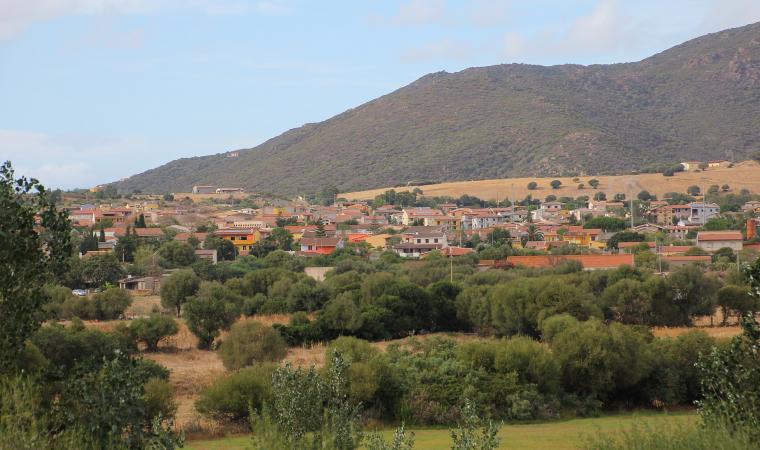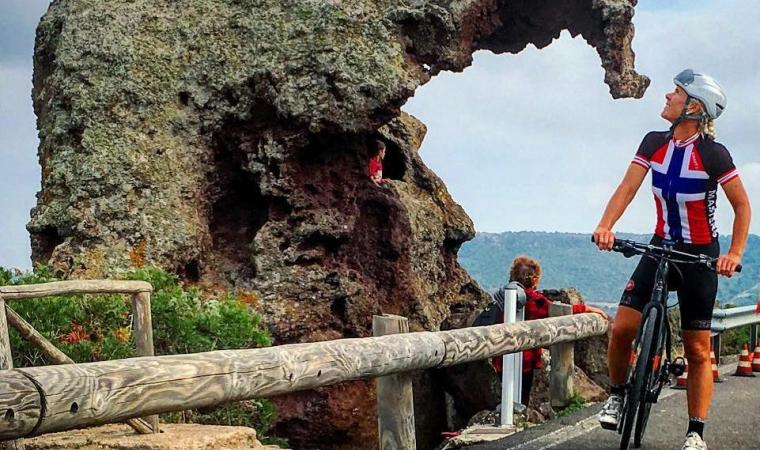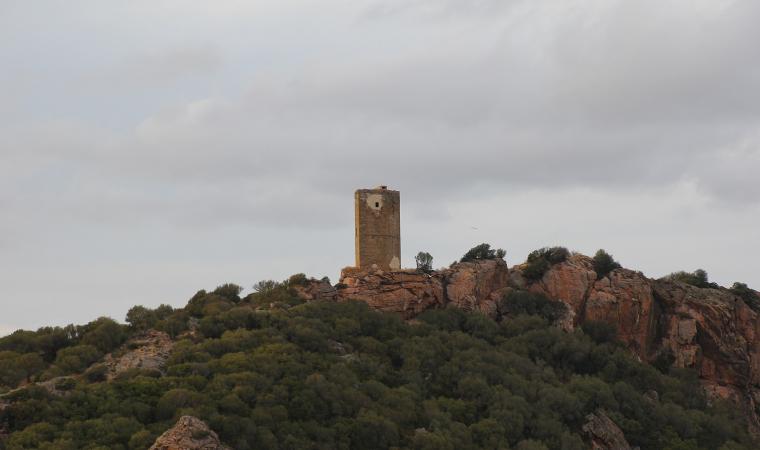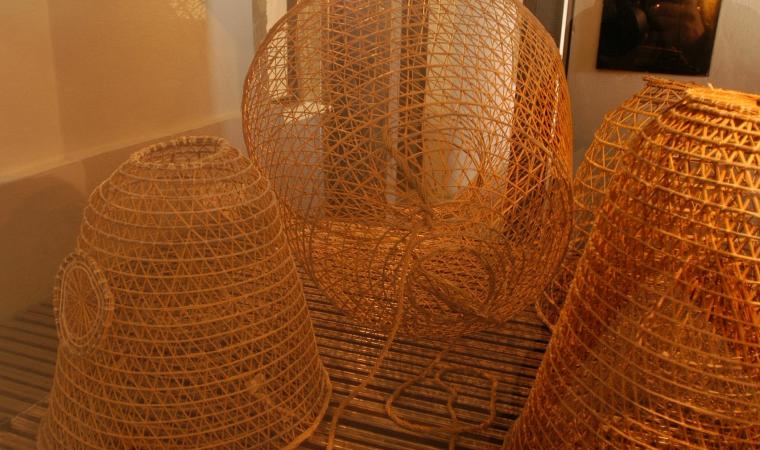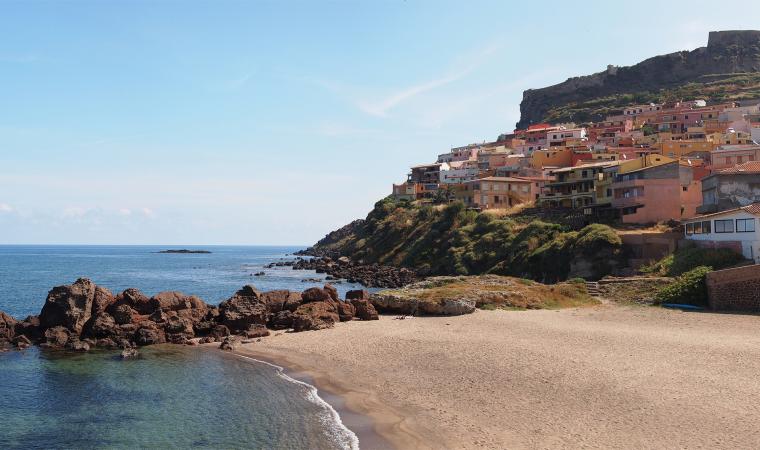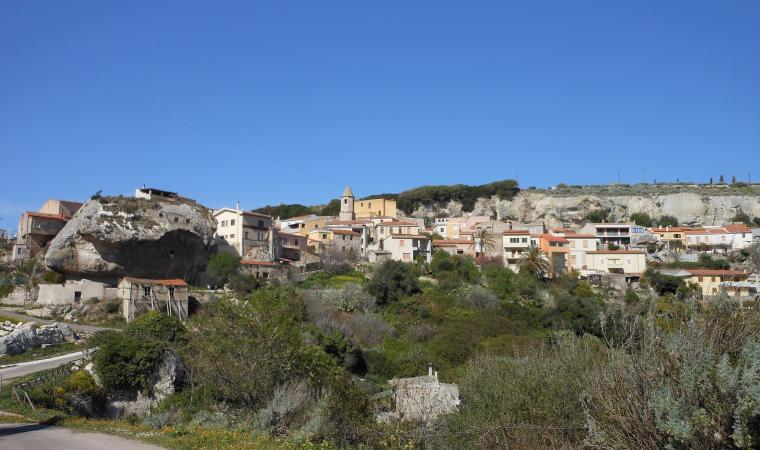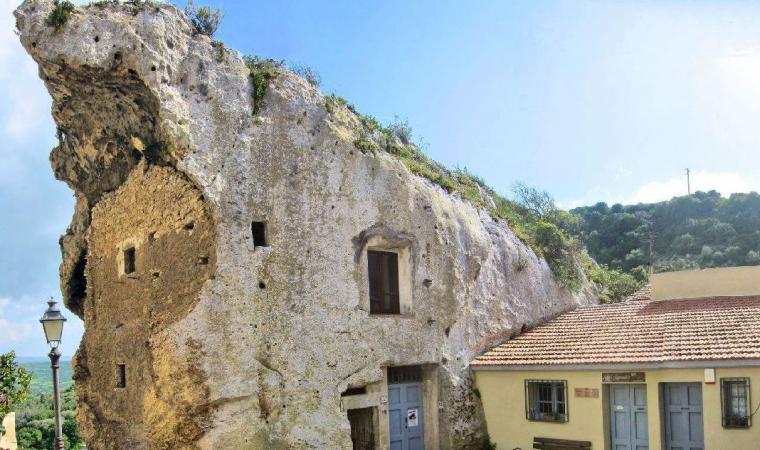Seven kilometres of soft, golden sand, with dunes covered in sea lilies sprouting here and there, the mouth of a river that creates a little lake behind it and a crystal clear, blue and emerald green sea in front. The long sandy shore of the Valledoria coast is a succession of colourful, fragrant landscapes that you can experience in many ways: relaxing on the beach and swimming in the transparent sea, riding the waves on kiteboards and surfboards, or observing the wildlife that populates the mouth of the Coghinas river, while walking or on horseback, cycling or crossing the river by boat or in a kayak.
Between the river and the sea, the most interesting natural stretch of the Valledoria coastlines extends next to the special protection area known as the ‘mouth of Coghinas’. The beach is called Alta Bhanda and you can reach it aboard one of the boats departing from the area called Imbarcadero. You can watch spectacular sunsets, when the sun’s rays fill the sea, the dunes, the vegetation and the shores of the lake with bright colours. You can also reach the beach via a walk from the adjoining beach of San Pietro a mare. It is the most famous stretch of the coast and it gets its name from a small church near the parking areas.
In the surrounding area you will also find remains of the ancient town of Ampurias, a bishopric in the Middle Ages. The beach is made of soft-coloured sand with dunes on which there are sea lilies and Mediterranean scrub and, thanks to the surrounding greenery and the rays of sun on the water, the sea reflects shades of emerald green. Unlike Alta Bhanda, you’ll find services such as refreshment areas and beach equipment rentals here. It is one of the spots most popular with water sports enthusiasts.
Continuing west you will come across the small beaches of Baia Verde (Green Bay) and Baia dei Ginepri (Bay of Junipers): they get their name from the surrounding vegetation, where eucalyptus, mimosa and junipers stand out. In Baia Verde, a wooden walkway makes access easier for people with disabilities and reduced mobility. A cluster of rocks separates Baia dei Ginepri from the beach of Maragnani, the shore of which is delimited at the back by cream-coloured sandstone rocks. The waters are shallow and suitable for families with children. The remains of buildings dating back to the Roman era can be found in the area; other finds - including urns - were discovered in the waters in front of the neighbouring beach to the west, known by two names: Prima Guardia and La Ciaccia. The sea here has a vivid turquoise colour, with a few rocks emerging every so often, and it is ideal for snorkelling enthusiasts.

